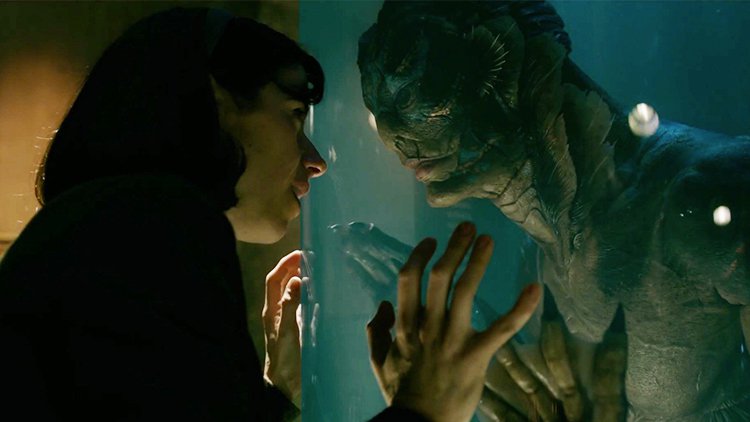Let me preface this review by declaring one of my biases — I love Guillermo del Toro movies. I like anything that is weird or strange, so this inter-species romance that is set in the Cold War was definitely my cup of tea. My friend, Jean, also rightly pointed out that del Toro’s movies are always about the wonderful, positive aspects of life that can be found amidst disaster. And she’s right.
Spoiler alert: Everything belong is a spoiler. Tread with caution.
Do note that the movie has n M18 rating.
The movie follows Elisa, who works at a secret government facility as a cleaner. Her friends include Zelda, a black lady who feels alone in her marriage to a husband whom she waits on hand and foot, and a gay man, Giles, who goes to the pie store as he has a crush on the waiter there. Elisa herself is an outsider as she is mute. After all, most people ignore her and make unkind insinuations, like her boss, Mr Strickland.
The whole movie is permeated by longing and a sense of loneliness. Although Zelda and Giles find solace in Elisa, it is a temporary reprieve because they go back to their respective prisons — Zelda to her husband, and Giles to his own mind. However, all of that changes when Elisa takes notice of the “asset” that comes to the facility. Housed in a tank or chained up, the amphibian man is trapped and oppressed by Strickland, who uses a very phallic electric baton to torture the creature. Pained by seeing the abuse inflicted on the creature, Elisa establishes a friendship with him and falls in love with him. Because Strickland wants to kill the “asset”, Elisa gets Giles, Zelda, and Russian spy “Bob”/Dmitri to help.
What’s lovely to see is how Elisa grows in the film–from someone who blends into the background, and who feels like she is overlooked by people, she starts to develop self-esteem and eventually makes herself heard. When Giles doesn’t wish to hear about what she has to say, she signs frantically to him and makes him say how she feels when it comes to the amphibian man:
When he looks at me, the way he looks at me… He does not know, what I lack… Or – how – I am incomplete. He sees me, for what I – am, as I am. He’s happy – to see me. Every time. Every day. Now, I can either save him… or let him die.
And that in and of itself is so heartbreaking. Heartbreaking because this is a film about outsiders who are overlooked, and who, for once, are acknowledged and seen because someone else can see how wonderful they are. And that, to me, is the heart of the film.
In the subsequent scenes, Elisa’s dull and teal uniform is accessorised with a red hairband, and some red shoes as well. As she gains confidence and becomes more visible, she even starts to sign “F-U-C-K-Y-O-U” to Strickland, her boss. While hilarious, there is an undercurrent of how the oppressed can and will finally turn on their oppressor–the white man.
Soon, everything comes crashing down — “Bob”/Dmitri is pushed to the edge as Strickland finds out that he is a Russian spy. On the cusp of death, Dmitri reveals that it is Elisa and Zelda who orchestrated the escape, and Strickland hunts them down. In the subsequent scenes, Zelda’s husband betrays her by divulging what he had overheard his wife telling Elisa, and this all results in the film’s climax where Elisa tries to release the amphibian man.
Imbued with loneliness, del Toro shines a light on how humanity, and how people, in their most desolate moments, must unite against their oppressors — the commentary on marginalised people is all too obvious as Strickland, with his veneer of civility as a supposedly wholesome, typipcal family man of the 50s, actually has a heart of darkness. He sexually harasses Elisa, tortures the amphibian man and threatens Zelda. The scenes where Strickland talks to his superior — show how the dominance of an old boys’ club is detrimental to everyone, even Strickland himself — as he unravels under the pressure.
But more importantly, the movie shows the importance of human connection and unity — it is not how alike we are on the outside. This isn’t to say that we don’t acknowledge our differences; we must see how power structures affect different types of people, and find the empathy to connect with them in order to fight the existing power structures that serve to marginalise them.
The Shape of Water is a film that one should watch this year. I give it an 8/10, and urge everyone to take the plunge.
